Coco peat is a common growing medium for horticulture and hydroponics. Its adaptability and multiple benefits have made it a popular choice among many farmers. This article provides a thorough examination of coco peat, including its production and processing processes, the environmental consequences of its use, and the stringent quality control standards applied along the manufacturing chain.
Discovering Coco Peat
Cocopeat, or coir pith, is a sustainable, natural byproduct of coconut husk processing. It’s a popular agricultural substrate due to its water retention and oxygenation for flowering roots. The process involves soaking the husks in water to soften the fibrous material, then separating it from the husks. This multifunctional material is highly valued by gardeners and horticulturists.
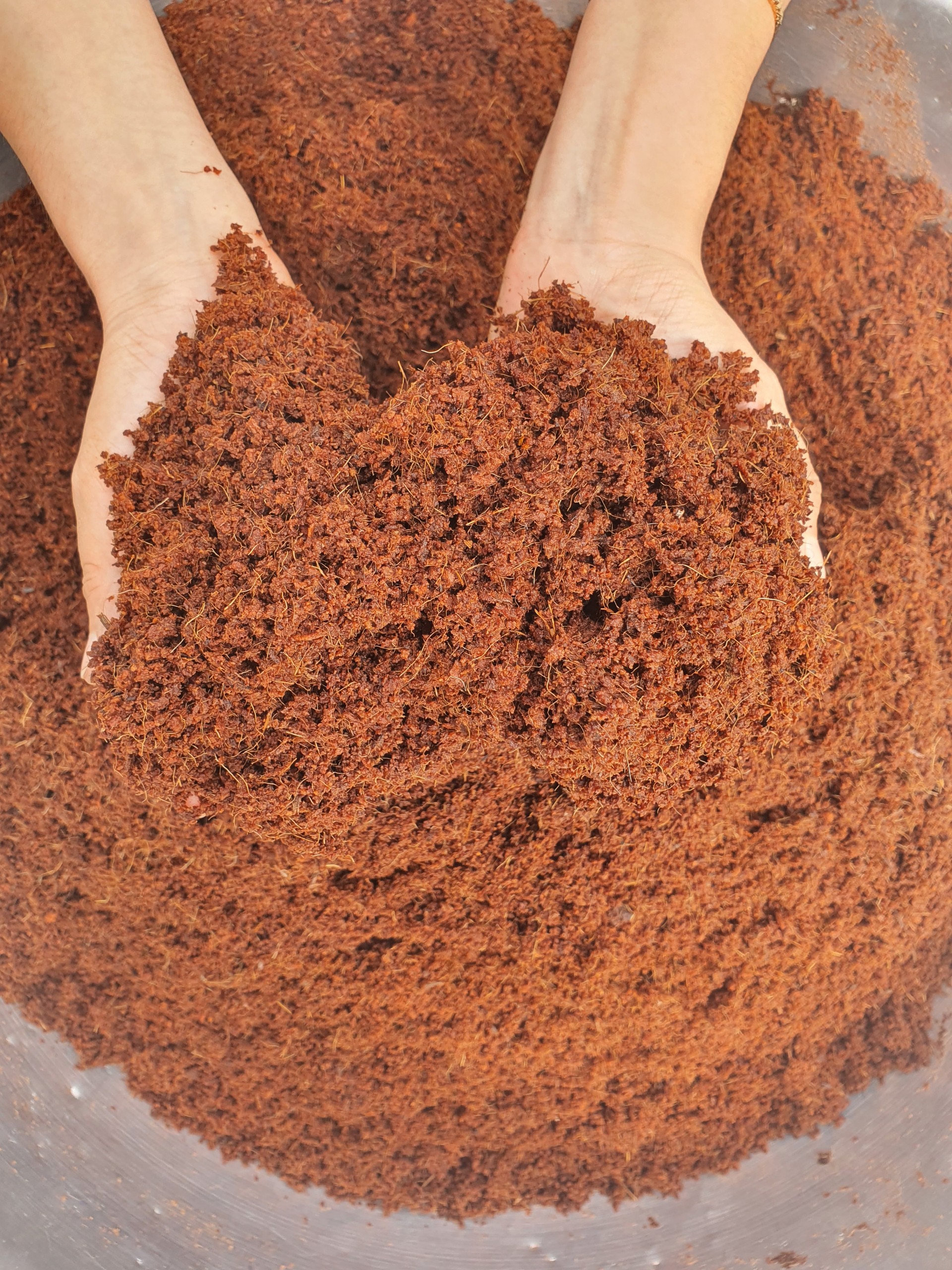
What is Coco Peat?
Coco peat, a squishy substance derived from coconut husks, is a popular growing medium due to its water-holding ability, lightweight design, and ease of use. It helps maintain soil moisture and prevents waterlogging and root rot. Coco peat is also biodegradable and renewable, making it an eco-friendly choice for gardening or farming. Its excellent drainage capabilities prevent waterlogging and root rot, making it an ideal choice for a variety of plants. Overall, coco peat offers numerous benefits for plant growth and sustainability.
Perks of Employing Coco Peat
Coco peat is a highly effective growing medium due to its exceptional moisture retention capacity, reducing the need for frequent waterings. It is lightweight, easy to transport, and known for its good drainage, preventing waterlogging and root rot. Coco peat is also eco-friendly, being renewable and biodegradable, making it suitable for both small and large-scale growers.
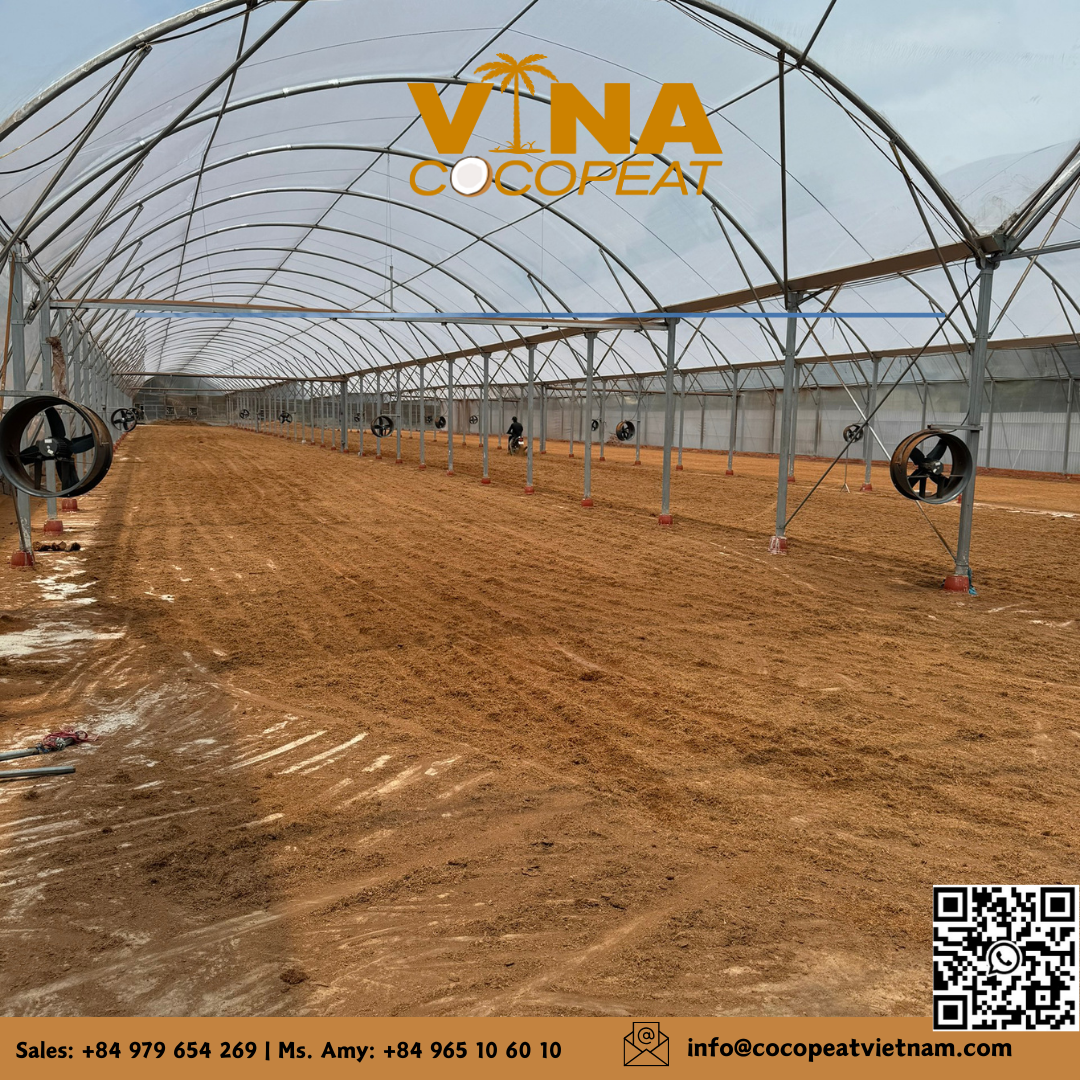
The Growing and Manufacturing of Coco Peat
Coco peat manufacture takes multiple stages to achieve a consistent and high-quality finished product.The creation of premium coco peat that fulfills industry standards and consumer expectations is contingent on several critical steps in the process that must be carefully monitored.
Material in Raw Form Collection
The initial phase in the manufacturing process is the procurement of raw materials.Coconut husks are collected from coconut fields and processing facilities. Farmers carefully choose mature coconuts with husks suitable for coco peat manufacturing. The quality of raw materials has a direct impact on the end product’s attributes, such as water retention and aeration.
Coconut husks are carried to the considering facility, where they are thoroughly inspected to ensure that only the best husks are used. This thorough method of choice is critical to preserving the high quality of coco peat.
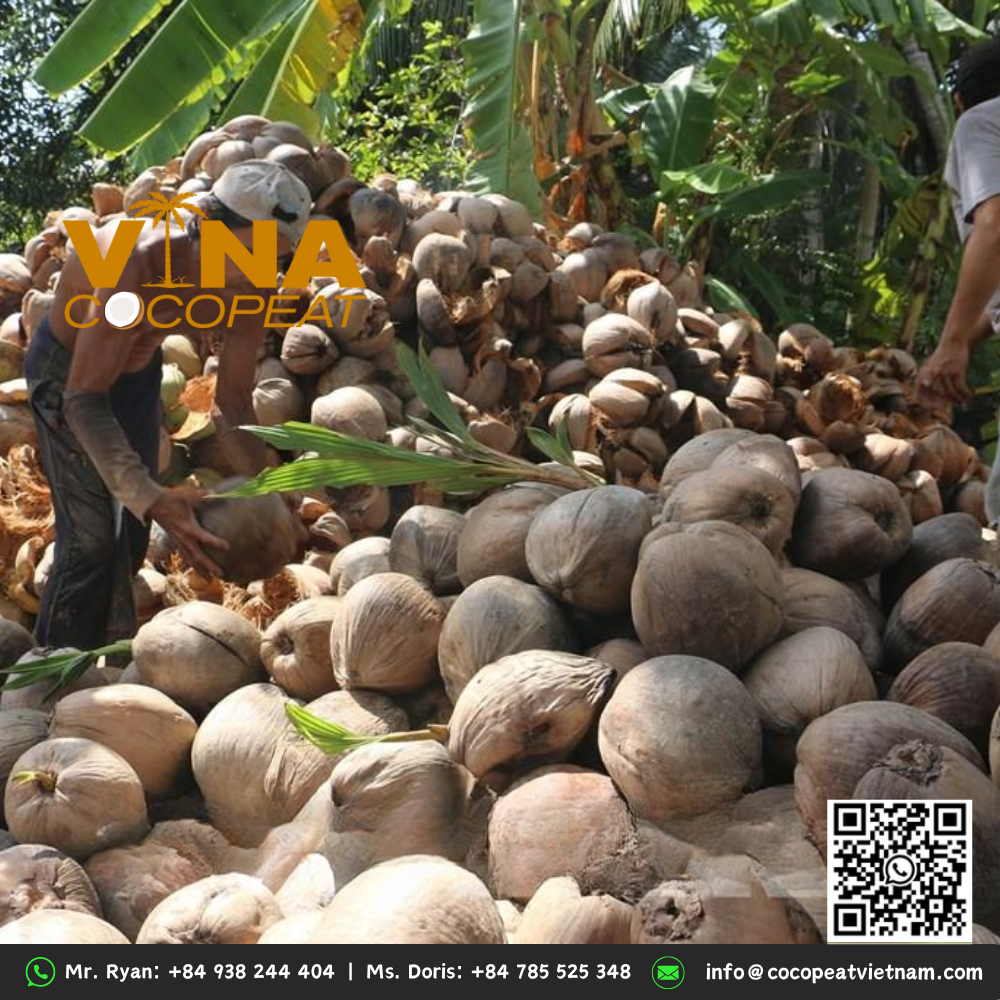
Grinding Coconut Husks
After the husks are gathered, they are processed to remove the outer fibers and pith.This is commonly accomplished with mechanical decoration devices, which efficiently remove the long fibers from the pith.The fibers, noted for their strength and durability, are widely used in a variety of industries, including agriculture, handicrafts, and erosion control.
The separated pith, which serves as the foundation for coco peat, is thoroughly scrutinized to guarantee consistency in texture and color. To ensure that the finished product is pure, all impurities and undesirable materials are thoroughly eliminated.
Creating Coco Peat
After the fibers are extracted, the pith is further processed to produce coco peat. The pith goes through a series of washing and drying phases to remove excess salts and contaminants, resulting in a clean and nutrient-rich growth medium. Specialized drying procedures are used to lower the moisture content of the pith to the ideal amount for coco peat manufacturing. After drying, the pith is finely sieved to provide a consistent particle size, yielding uniform and fine-textured coco peat. This thorough screening procedure ensures that the finished product satisfies the required criteria and has good water retention and aeration capabilities for a variety of agricultural and horticultural applications.
Controlling Quality for Coco Peat Production
Optimizing the quality of coco peat is critical for meeting farmer expectations and ensuring consumer satisfaction. Quality assurance plays a crucial part in coco peat production, ensuring that the final product is of good quality and fulfills industry requirements. By employing strict quality control procedures, producers can improve the nutritional value of coco peat as a growing medium and ensure plant culture success.
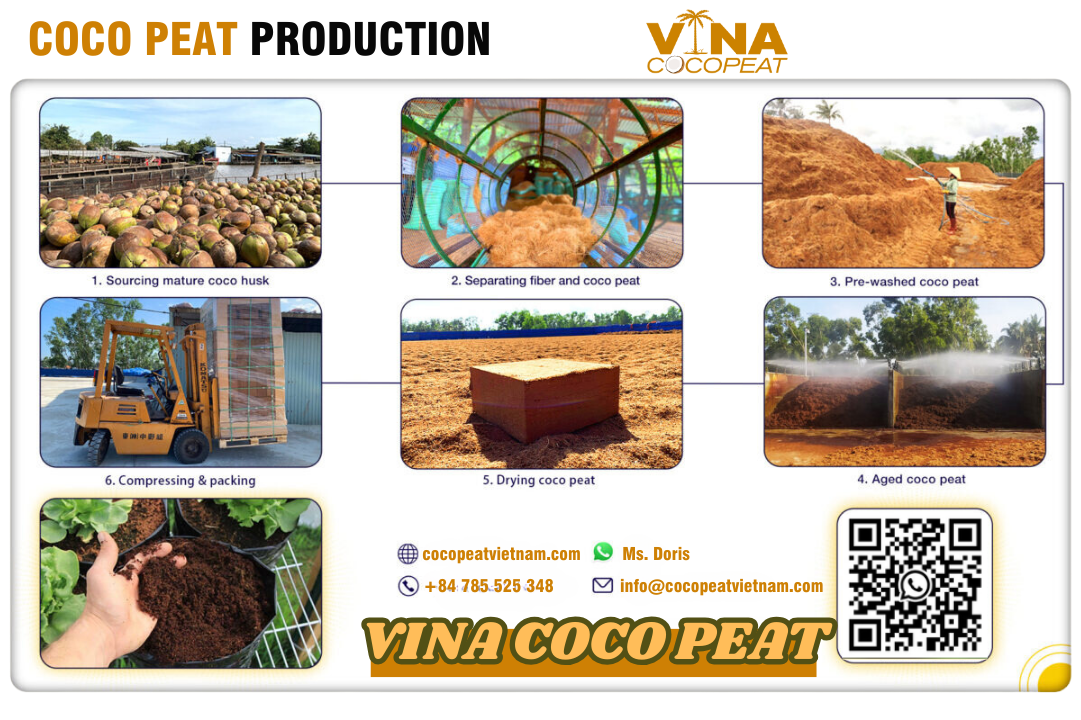
Necessity of Quality Control
To achieve the appropriate standards for use as a growing medium, coco peat must be inspected and checked on a regular basis at various stages of manufacturing. To ensure the excellence of the product, any faults or discrepancies must be recognized and remedied as soon as possible. By maintaining constant quality, companies can earn client trust and establish annotated for dependability in the marketplace.
Quality Control Measures for Production
In coco peat production, quality control techniques include checking the end product’s moisture content, pH level, and electrical conductivity. The moisture content is evaluated to verify that it is within the acceptable range for good water retention qualities. pH level testing determines the acidity or alkalinity of coco peat, which is necessary for plant growth. Electrical conductivity testing is used to determine the nutrient content and salt level in coco peat, as excess minerals can harm plants.

From raw ingredients to packaging, high quality requirements are upheld throughout the manufacturing process. Coco peat manufacturers can supply a constant and trustworthy product that fulfills growers’ needs while also contributing to the success of agricultural activities by adhering to tight quality control methods.
Machining of Coco Peat
After being created, coco peat is further processed to prepare it for market distribution. This process is critical to ensuring the final product’s quality and usability. Coco peat is processed in a series of processes, from raw material to marketable output.
Dewatering and filtering Coco Peat
The first step in preparing coco peat is to completely dry it. This can be accomplished through natural solar drying or using mechanical dryers. Proper drying of coco peat is essential to reduce its moisture content, making it lighter and simpler to handle. Once dried, it must be thoroughly sieved to remove any impurities and bigger particles, resulting in an even and consistent finished product. This technique also improves aeration in the cocopeat, which is required for optimal development of root systems while cultivating plants.
During the drying process, care is required to retain the structural integrity of the coco peat fibers in order to keep their water retention properties. The sieving process is careful to ensure that the finished product is free of contaminants, resulting in excellent performance in a variety of applications.
Compressing and Packaging
After screening, the coco peat is compacted into blocks or briquettes for convenient transportation and storage. Compressed coco peat takes up less room and costs less to transport, lowering logistics-related carbon emissions. The compression method also extends the shelf life of coco peat by reducing its interaction with air and moisture. These blocks or briquettes are then wrapped in plastic containers or bales before being sent to nurseries, garden centers, and other consumers.

Coco peat is packaged to ensure quality throughout storage and transportation. Properly packaged coco peat preserves its moisture content and texture, ensuring that end customers receive a high-quality product that fulfills their growing demands. The tiny packaging also makes it easier to handle and show at retail shops, which benefits both sellers and consumers.
Ecological effects of Coco Peat Production
While coco peat production has numerous advantages, it is vital to examine the environmental impact.
Sustainability of Coco Peat Production
Coco peat production can be sustainable if suitable harvesting methods are used. Coconut palms are a renewable resource that supports the daily lives of many farmers. Coco peat is a fantastic choice because it is biodegradable, reusable, and compostable. It saves waste and considerably lowers environmental impact.
Waste Treatment for Coco Peat Production
Effective waste control is critical in coco peat manufacturing. Any waste generated during processing, such as coconut husk fibers, can be repurposed, lowering overall waste and increasing resource usage. Waste that cannot be repurposed or recycled should be properly disposed of.
VINA COCO PEAT – The wonderful experience for you guys
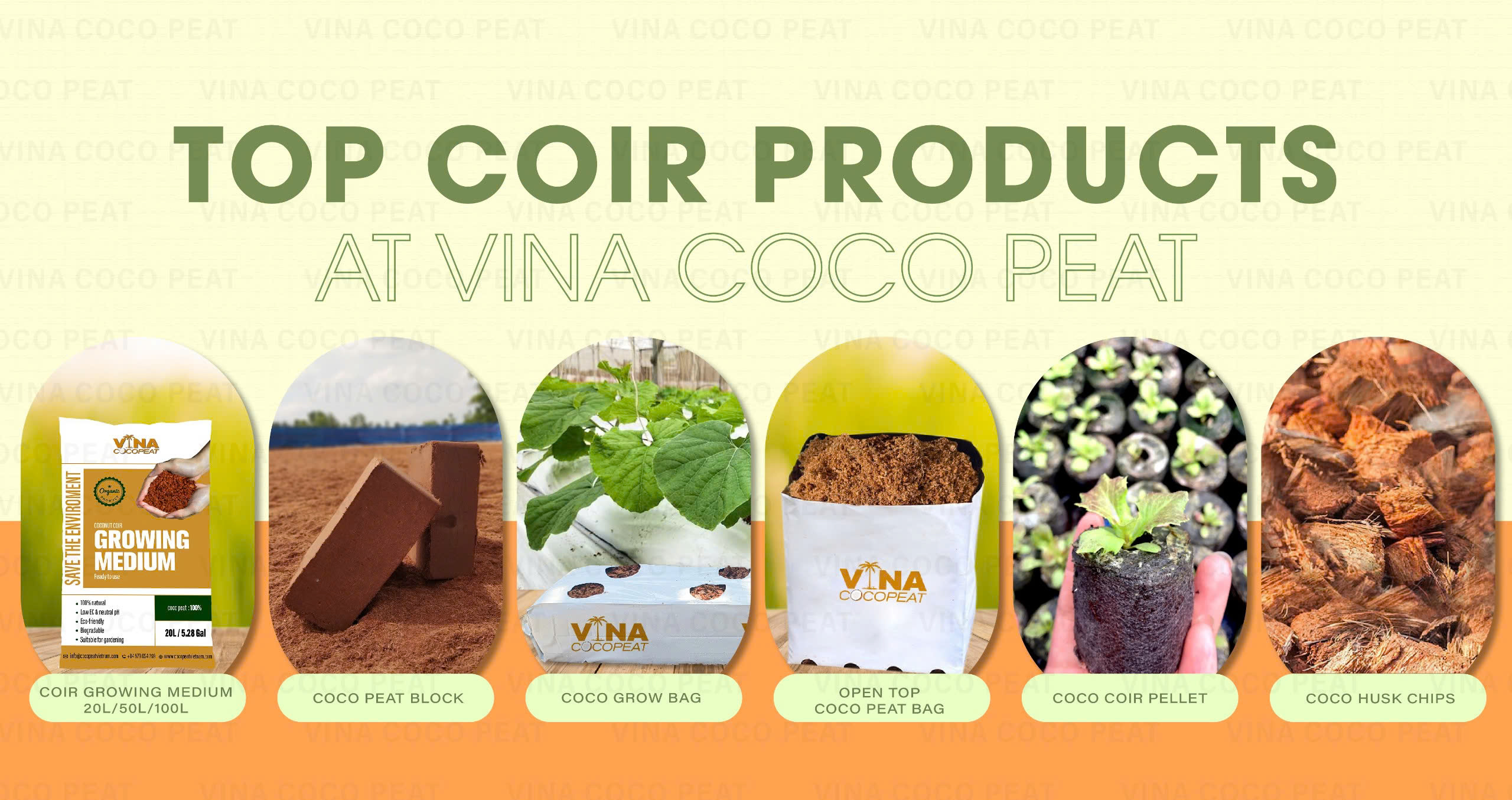
At VINA COCO PEAT, we provide a wide range of coco coir-derived composting materials, including peat bricks, chips, and substrate mixes, etc.
Contact VINA COCO PEAT if you are looking for coco peat suppliers in Vietnam.
Ms. Doris: +84 785 525 348 (ZALO, WHATSAPP, WECHAT, LINE)
Mr. Ryan: +84 961 071 137 (ZALO, WHATSAPP, WECHAT)
한국 영업 담당자: +84 969 273 598 (Ms. Lan)
中文: +84 397 317 401 (Ms. Vi)
Email: info@cocopeatvietnam.com – www.cocopeatvietnam.com
